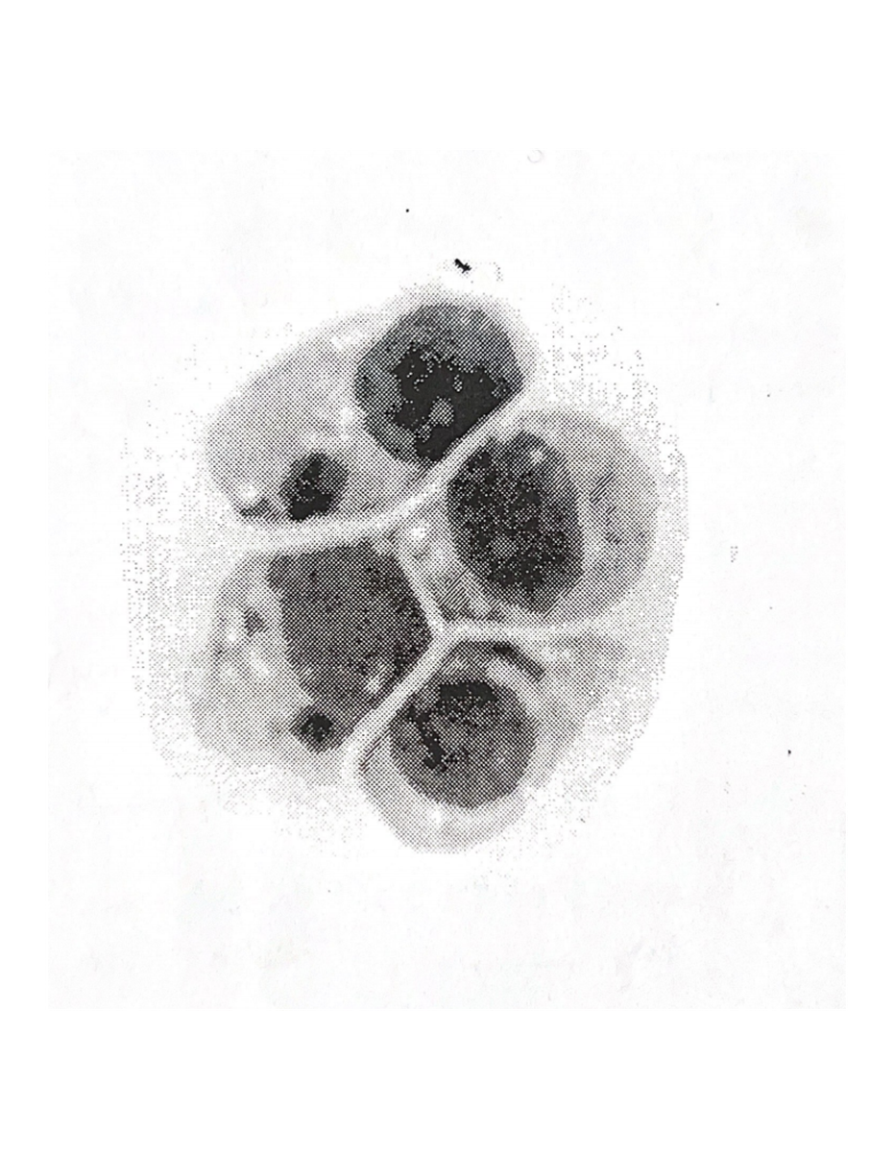Previous Issues Volume 7, Issue 2 - 2023
Presence Of Plasmocytes in Non-Immunized A. Rubens Sea Stars
Michel Leclerc*
Immunology of Invertebrates, Orléans University, France
*Corresponding author: Michel Leclerc, Immunology of Invertebrates, Orléans University, France, Tel: 0238410209, Email: [email protected].
Received Date: November 27, 2022
Published Date: December 08, 2023
Citation: Leclerc M. (2023). Presence Of Plasmocytes in Non-Immunized A. Rubens Sea Stars. Mathews J Immunol Allergy. 7(2):24.
Copyrights: Leclerc M. © (2023).
ABSTRACT
In this brief report, we recall the existence of sea star T and B lymphocytes in the sea star Asterias rubens. Otherwise the figure 1 shows sea star Plasmocytes, after centrifugation in a micro hematocrit centrifuge at 100g, in animals which have not been immunized. Their presence calls an explanation: Either they exist in a spontaneous way or, may be, they are induced by external immune causes.
Keywords: Plasmocytes, Sea Stars, Animals, Axial Organ, Lymphocytes.
INTRODUCTION
We have described in the past [1] plasmolymphocytic cells in the Axial Organ (AO) of starfishes or sea stars: Asterias rubens, after immunizations to HRP (Horse-radish peroxydase). More recently, we discover what we call sea star plasmocytes, in non-immunized A.rubens ( Figure 1), at the level of the Axial organ, which has been considered by us, as a primitive lymphoïd organ. It merits to be said because it s the only lymphoïd organ which has been discovered in Invertebrates [2].
METHODS
The AO cells (from the whole AO cell population), were obtained after centrifugation at 100 g, in a micro hematocrit centrifuge and colored to Giemsa.
RESULTS
The Figure 1 shows plasmocytes of A.rubens with a diameter of 7-8 µ: they have a cytoplasm more important than in lymphocytes (either sea star T lymphocytes or B sea star lymphocytes [3]. We recall sea star lymphocytes can be separated into T and B by a nylon-wool column, according the well-known method of Julius et al. [4].
The plasmocyte nucleus seem reoriented in the Figure 1: it is due to the centrifugation. Some of them are reniform (3 nuclei out of 4 observed). At last some vesicles appear in the cytoplasm.
Figure 1. Sea star Asterias rubens plasmocytes after centrifugation and coloration at Giemsa.
DISCUSSION AND CONCLUSION
The existence of sea star A.rubens plasmocytes in non-immunized A.rubens can be explained by:
The fact:
- They exist in a spontaneous way.
- Some external attacks like virus, microbes which surround the biotope can provoke their emergence.
We presume that sea star plasmocytes are issued from the lineage of B sea star cell subpopulation. It is correlated, in conclusion, to the existence of the IPA (Invertebrate Primitive Antibody) and also Nanobodies in Invertebrates [5]. It seems necessary to repeat again these data to the Scientific Communauty.
REFERENCES
- Leclerc M. Thèse de Doctorat ès Sciences. France: Orleans University; 1974.
- Leclerc M, Brillouet C, Luquet G. (1980). The starfish axial organ: An ancestral lymphoid organ. Dev Comp Immunol. 4(4):605-615.
- Leclerc M, Arneodo V, Legac E, et al. (1993). Identification of T-like and B-like lymphocyte subsets in sea star Asterias rubens by monoclonal antibodies to human leucocytes. Thymus. 21:133-139.
- Julius MH, Simpson E, Herzenberg LA. (1973). A rapid method for the isolation of functional thymus-derived murine lymphocytes. Eur J Immunol. 3(10):645-649.
- Leclerc M. (2022). The Nanobodies and its Relations to IPA (Invertebrate Primitive Antibodies). Existence of At Least 2 Classes of IPA in Sea Star Immune System. Mathews J Immunol Allergy. 6(1):14.
